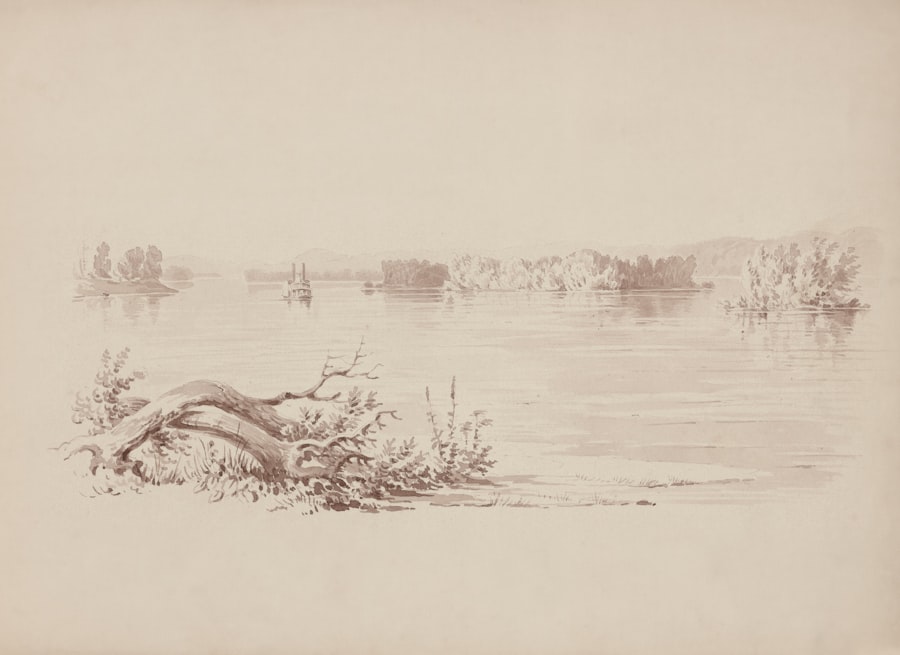
Characters serve as the heartbeat of any narrative, particularly in short stories where brevity is paramount. They are not merely vessels for the plot; rather, they embody the themes and emotions that resonate with readers. In a limited word count, the depth and relatability of characters can make or break a story.
A well-crafted character can evoke empathy, provoke thought, and linger in the reader’s mind long after the final sentence. The emotional connection that readers forge with characters is often what compels them to engage with the story on a deeper level, making character development a crucial aspect of short fiction. Moreover, characters are instrumental in driving the narrative forward.
Their decisions, conflicts, and transformations propel the plot and create tension. In a short story, where every word counts, characters must be compelling enough to sustain interest while also being integral to the unfolding events. The interplay between character and plot is particularly significant in this format; a character’s journey can encapsulate broader themes such as love, loss, or redemption within a concise framework.
Thus, understanding the importance of characters is essential for any writer aiming to craft impactful short stories.
Key Takeaways
- Characters are essential in short stories as they drive the plot and engage readers on an emotional level.
- Developing complex and multifaceted characters involves giving them depth, flaws, and internal conflicts.
- Dialogue can be used to reveal character traits, such as their personality, motivations, and relationships with others.
- Creating memorable character descriptions involves using vivid language and sensory details to bring them to life.
- Exploring the motivations and goals of characters helps to drive the plot and create conflict and tension.
Developing Complex and Multifaceted Characters
Creating complex characters involves delving into their backgrounds, motivations, and inner conflicts. A multifaceted character is one who possesses both strengths and weaknesses, making them relatable and realistic. For instance, consider a character who is a successful businesswoman but struggles with feelings of inadequacy stemming from her childhood.
Writers can achieve this complexity by incorporating various traits, quirks, and experiences that shape the character’s worldview. Additionally, it is essential to show how these complexities manifest in the character’s actions and decisions throughout the story.
A character who is both ambitious and fearful may find themselves at a crossroads when presented with an opportunity that could either elevate their career or expose their vulnerabilities. By illustrating these internal conflicts through their choices, writers can create a rich tapestry of character development that enhances the overall narrative. The key lies in ensuring that each character feels like a real person with a unique set of experiences and emotions that inform their behavior.
Using Dialogue to Reveal Character Traits

Dialogue is a powerful tool for revealing character traits and advancing the plot simultaneously. Through conversations, writers can showcase a character’s personality, background, and emotional state without resorting to lengthy exposition. For example, a character who speaks in short, clipped sentences may convey impatience or anxiety, while another who uses elaborate language might suggest sophistication or pretentiousness.
The choice of words, tone, and rhythm in dialogue can provide insights into a character’s psyche and social standing. Moreover, dialogue can also serve to highlight relationships between characters. The way individuals interact with one another can reveal underlying tensions or affinities that drive the narrative forward.
For instance, a character who frequently interrupts another may indicate dominance or insecurity in their relationship. By crafting dialogue that feels authentic and true to each character’s voice, writers can create dynamic interactions that enrich the story. This technique not only enhances character development but also keeps readers engaged through realistic exchanges that reflect the complexities of human communication.
Creating Memorable Character Descriptions
| Aspect | Metrics |
|---|---|
| Character Name | Number of unique character names |
| Physical Description | Percentage of characters with detailed physical descriptions |
| Personality Traits | Most common personality traits used |
| Emotional Impact | Reader feedback on emotional impact of character descriptions |
| Memorability | Percentage of characters remembered by readers |
Character descriptions play a vital role in establishing a vivid image in the reader’s mind. A memorable character description goes beyond physical attributes; it encompasses mannerisms, clothing choices, and even the way a character carries themselves. For instance, describing a character as having “ink-stained fingers and a perpetually rumpled shirt” immediately conjures an image of a passionate writer who may be disorganized yet deeply committed to their craft.
Such details help to create a lasting impression and allow readers to visualize characters more vividly. In addition to physical traits, incorporating sensory details can further enhance character descriptions. Describing how a character smells—perhaps of fresh coffee or old books—can evoke specific associations that enrich their portrayal.
Furthermore, using metaphors or similes can add layers to descriptions; for example, likening a character’s laughter to “the sound of wind chimes on a summer day” not only paints an auditory picture but also conveys warmth and joy. By weaving together various descriptive elements, writers can create characters that resonate with readers long after they have turned the page.
Exploring the Motivations and Goals of Characters
Understanding what drives a character is essential for creating depth and authenticity in storytelling. Characters are often defined by their motivations—what they want to achieve and why they desire it. For instance, a character who seeks revenge for a past wrong may be motivated by feelings of betrayal and injustice.
This desire can lead them down a dark path, creating internal conflict as they grapple with the moral implications of their actions. By exploring these motivations, writers can craft narratives that delve into the complexities of human nature. Moreover, characters’ goals often serve as catalysts for conflict within the story.
A protagonist striving for acceptance in a community may face opposition from those who fear change or challenge societal norms. This tension not only propels the plot but also allows for rich character development as individuals confront obstacles that test their resolve. By clearly defining characters’ motivations and goals, writers can create compelling arcs that resonate with readers on an emotional level.
Utilizing Character Arcs to Drive the Plot

Character arcs are essential for transforming static characters into dynamic ones who evolve throughout the narrative. A well-defined arc illustrates how a character changes in response to their experiences and challenges. For example, consider a character who begins as an introverted individual hesitant to take risks but gradually learns to embrace vulnerability through meaningful relationships.
This transformation not only enriches the character but also propels the plot forward as their newfound confidence leads them to confront obstacles they once avoided. In short stories, where space is limited, it is crucial to ensure that character arcs are both clear and impactful. Writers can achieve this by focusing on pivotal moments that catalyze change—such as a significant loss or an unexpected opportunity—that force characters to reevaluate their beliefs and behaviors.
By intertwining character development with plot progression, writers can create narratives that feel cohesive and satisfying while allowing readers to witness the growth of characters they have come to care about.
Avoiding Stereotypes and Clichés in Character Development
Stereotypes and clichés can undermine the authenticity of characters and detract from the overall quality of a story. When characters are reduced to one-dimensional archetypes—such as the “dumb jock” or “the quirky artist”—they lose their individuality and fail to resonate with readers on a deeper level. To avoid falling into this trap, writers should strive for originality by drawing from diverse experiences and perspectives when crafting their characters.
One effective approach is to create characters with unexpected traits or backgrounds that challenge conventional norms. For instance, portraying a tough-looking biker who volunteers at a local shelter can subvert expectations and add depth to their persona. Additionally, incorporating nuanced motivations and conflicts can help steer clear of clichés; rather than relying on tired tropes, writers should focus on what makes each character unique within their specific context.
By prioritizing authenticity over stereotypes, writers can create rich characters that feel genuine and relatable.
Balancing Character Development with Plot Advancement
In short stories, achieving a balance between character development and plot advancement is crucial for maintaining reader engagement. While it is essential to flesh out characters with depth and complexity, it is equally important to ensure that their development serves the narrative’s progression. Writers must be mindful of pacing; excessive backstory or introspection can slow down the plot and detract from momentum.
One effective strategy is to integrate character development into key plot points seamlessly. For example, rather than dedicating entire sections to exposition about a character’s past, writers can reveal pertinent details through action or dialogue during pivotal moments in the story. This approach not only keeps the narrative moving but also allows readers to glean insights into characters organically as they navigate challenges or confrontations.
By striking this balance between character exploration and plot dynamics, writers can create compelling short stories that captivate audiences while delivering meaningful insights into human nature.
If you’re interested in exploring character development in short stories further, you may want to check out the article “The Importance of Character Development in Short Stories” on sersea.ink. This article delves into the significance of creating well-rounded and dynamic characters in short fiction, and offers valuable insights on how to effectively develop characters that resonate with readers. It’s a great resource for writers looking to enhance their storytelling skills and create more engaging narratives.
FAQs
What is character development in short stories?
Character development in short stories refers to the process of creating and portraying characters in a way that allows them to grow, change, and evolve throughout the narrative. It involves showing the development of a character’s personality, beliefs, values, and behaviors over the course of the story.
Why is character development important in short stories?
Character development is important in short stories because it helps to create more engaging and relatable characters. It allows readers to connect with the characters on a deeper level and become invested in their journey. Well-developed characters can also drive the plot forward and add depth to the overall story.
How is character development achieved in short stories?
Character development in short stories can be achieved through a variety of techniques, including dialogue, actions, thoughts, and interactions with other characters. Authors can also use flashbacks, internal monologues, and character arcs to show the growth and change of their characters over time.
What are some common character development techniques used in short stories?
Some common character development techniques used in short stories include showing characters facing challenges and overcoming obstacles, revealing their inner thoughts and emotions, and depicting their relationships with other characters. Authors may also use symbolism, foreshadowing, and character flaws to develop their characters.
How does character development differ in short stories compared to longer works?
Character development in short stories often needs to be more concise and focused compared to longer works. Authors have a limited word count to work with, so they must use efficient and effective techniques to develop their characters within a shorter narrative. This may require more strategic use of dialogue, actions, and other storytelling elements.



